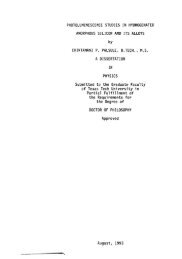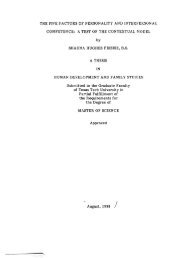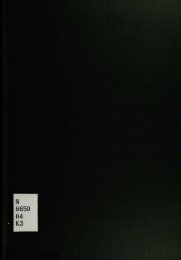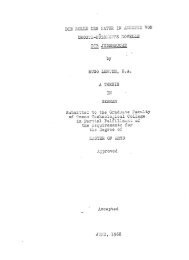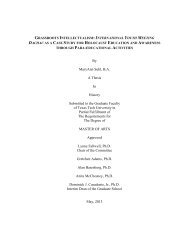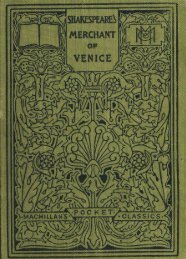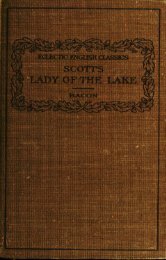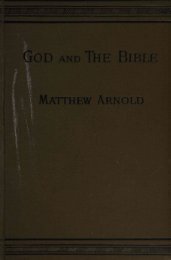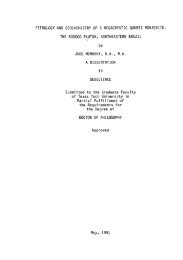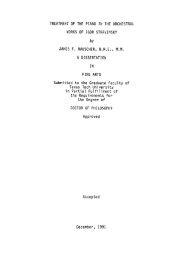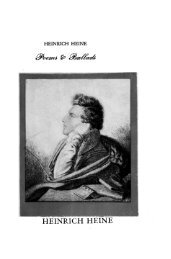THE SOUNDSCORE TO heartBEAT: A NARRATIVE-FORM MUSIC ...
THE SOUNDSCORE TO heartBEAT: A NARRATIVE-FORM MUSIC ...
THE SOUNDSCORE TO heartBEAT: A NARRATIVE-FORM MUSIC ...
You also want an ePaper? Increase the reach of your titles
YUMPU automatically turns print PDFs into web optimized ePapers that Google loves.
compositional technique involved modifying and building musical ideas around the<br />
occurrence of specific visual cues which had been converted into musical time.<br />
14<br />
Tape Synchronization<br />
A significant techiucal dimension of the <strong>heartBEAT</strong> soundscore was the<br />
synchronization of sound and image. Audio and video portions of the work had to<br />
remain physically synchronized during all stages of score preparation. This was<br />
accomplished through the use of SMPTE time code. SMPTE (Society of Motion Picture<br />
and Television Engineers) is an audio signal in which bits of data arranged in a sequence<br />
of hours, seconds, minutes, frames, and subframes are encoded.<br />
The use of SMPTE time code synchronization in <strong>heartBEAT</strong> was an integral part of<br />
the production process. A time code stripe, previously recorded onto one of the audio<br />
channels of the videotape, was duplicated onto one of the sixteen tracks of audio tape. A<br />
time code synchronizer monitored and compared the two signals, sending servo<br />
instructions to the capstan motor of the slave machine (in this case, the Fostex E-16)<br />
locking it with the video deck with a measurable acciu^cy of 1/300 of a second.<br />
The Fostex synchronization system contains chase and lock features, automatic<br />
record punch-in and punch-out, the setting of play-to-park values, and numerous other<br />
SMPTE-based functions. By using the foldback feature of the synchronizer (essentially a<br />
time-code "thru" jack) the time code stripe on either the audio or \ ideo tapes can be used<br />
to synchronize any code-based device.<br />
Computer Music Systems<br />
The preparation of the score to <strong>heartBEAT</strong> made use of numerous developments in<br />
computer music technology. These developments are currently in an industry-wide stage<br />
of rapid growth, with new hardware and software improvements occurring continuously.<br />
As background work surrounding the project spanned a three-year period, the production<br />
of <strong>heartBEAT</strong> was characterized by the use of numerous generations of music hardware<br />
and software.<br />
For example, the Kurzweil 250, a digital sampling synthesizer which ser\'ed as a<br />
centerpiece of sound design in <strong>heartBEAT</strong>. underwent two software updates (Versions<br />
1.0 and 2.0) during the early stages of the project. This particular unit was eventually<br />
sold in February, 1988 and replaced by the newly developed Kurzweil 250 RMX<br />
(Version 4.1). Sequencing software was initially limited to the Kurzweil's internal<br />
sequencer. This system was eventually replaced by Southworth Music's Midi Pa int. a<br />
software-based sequencer for the Apple Macintosh. This software offered numerous



